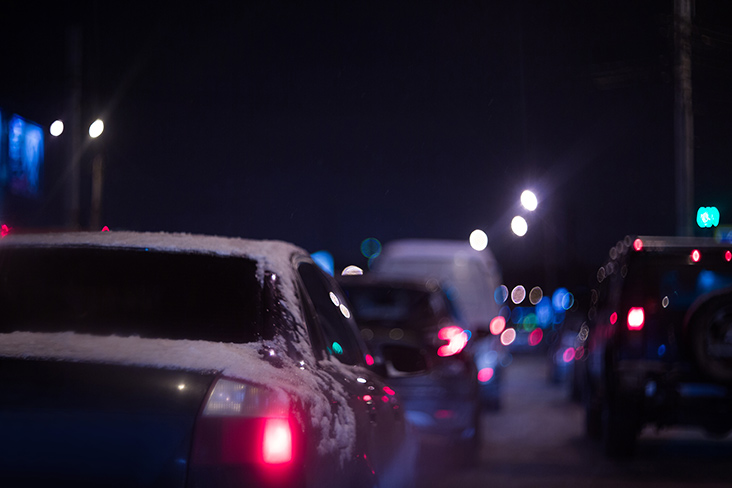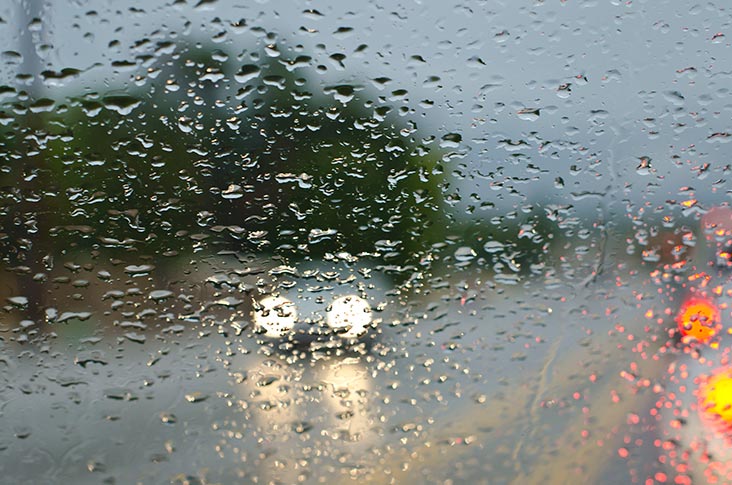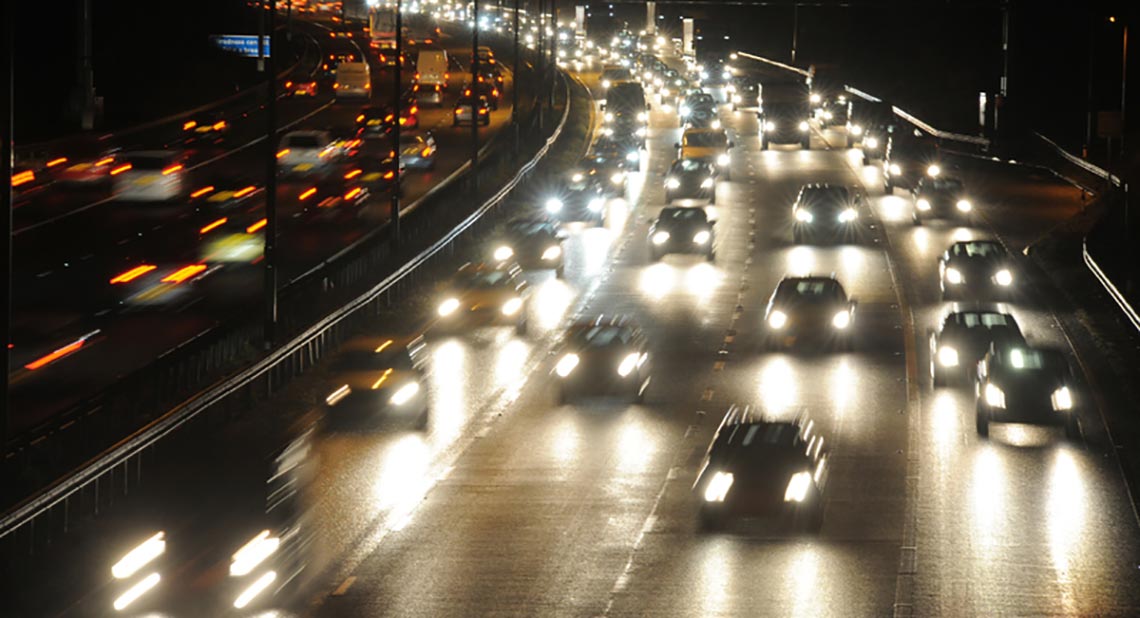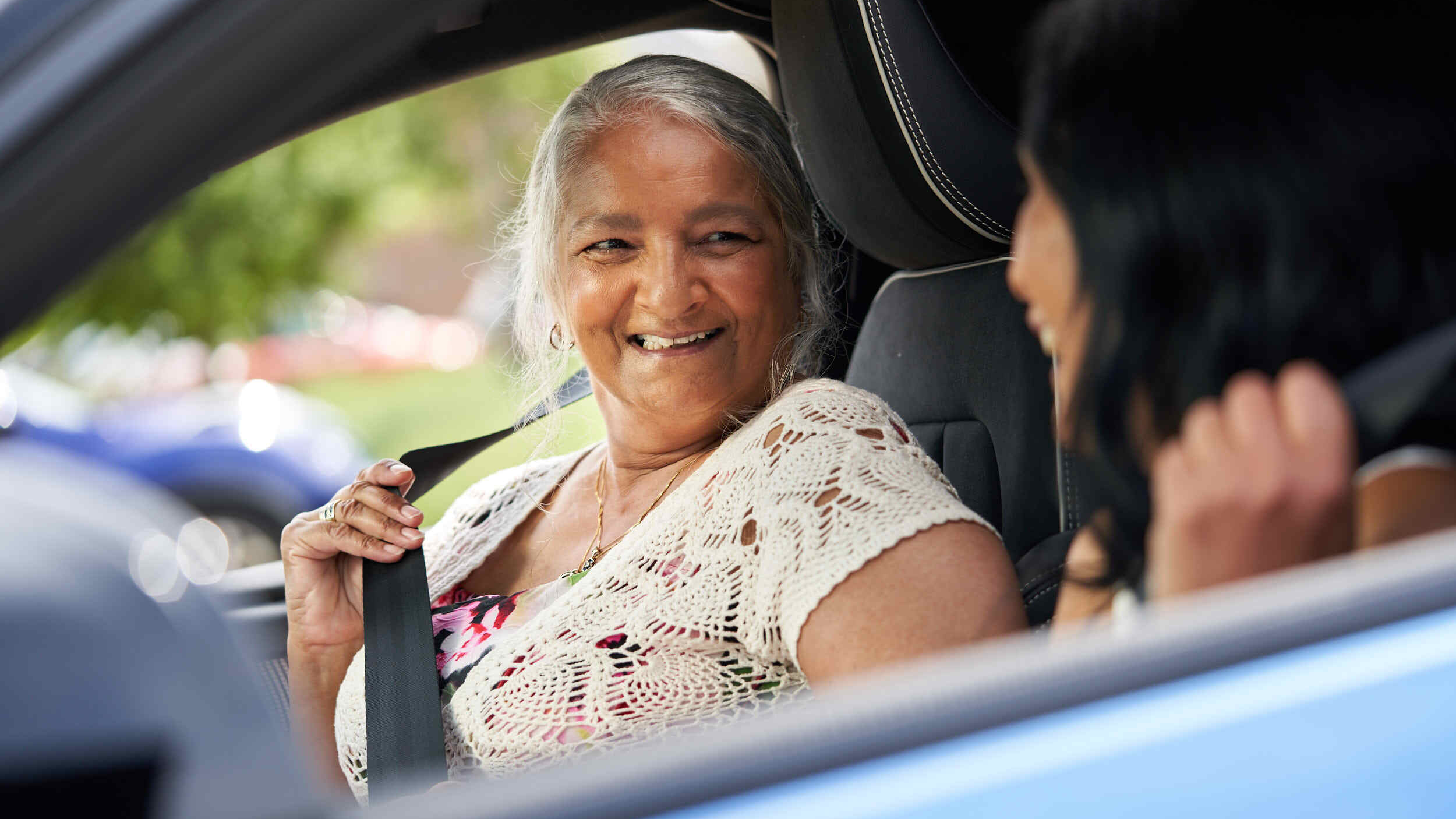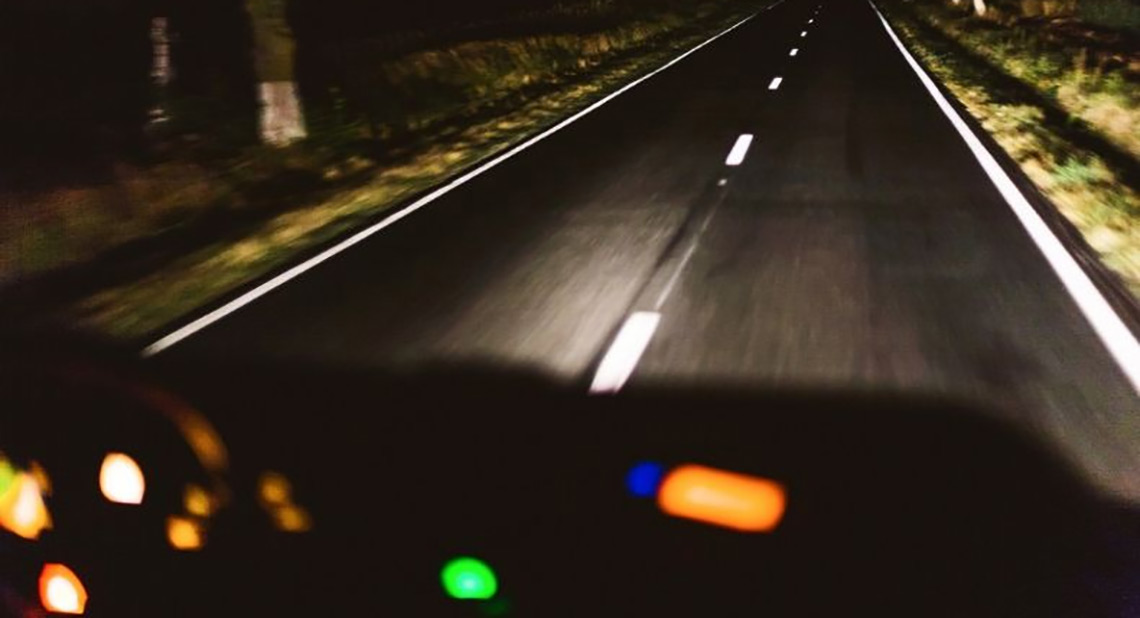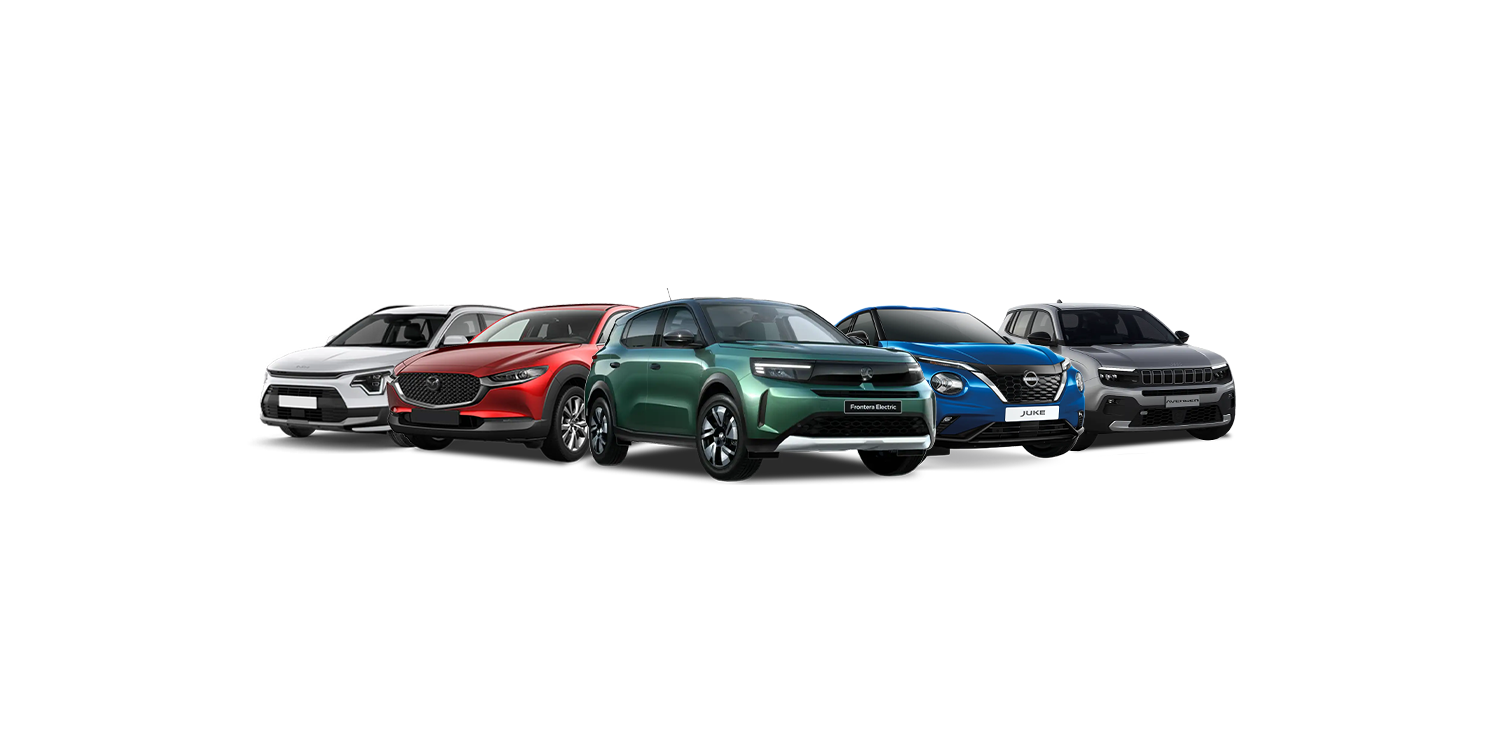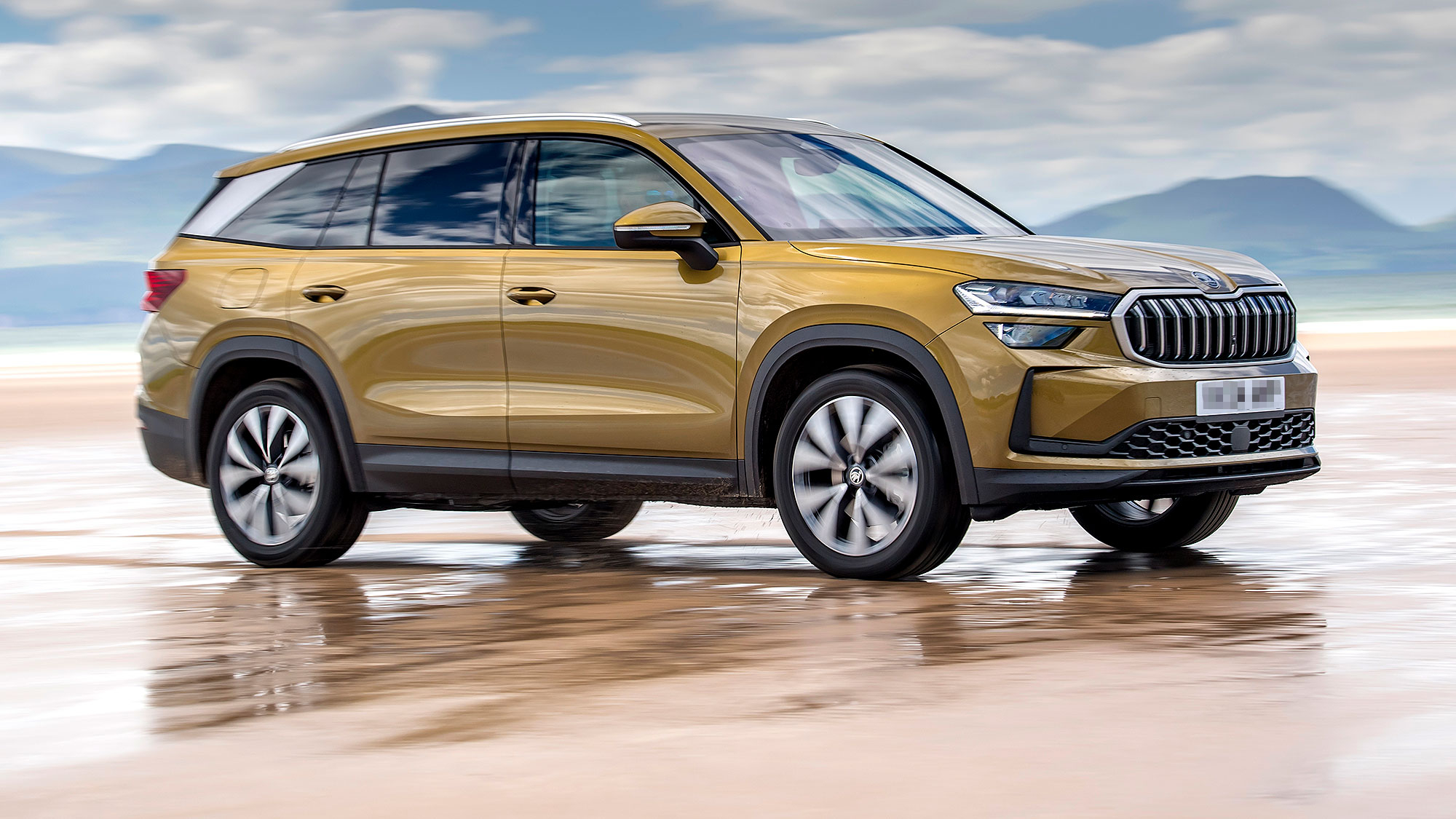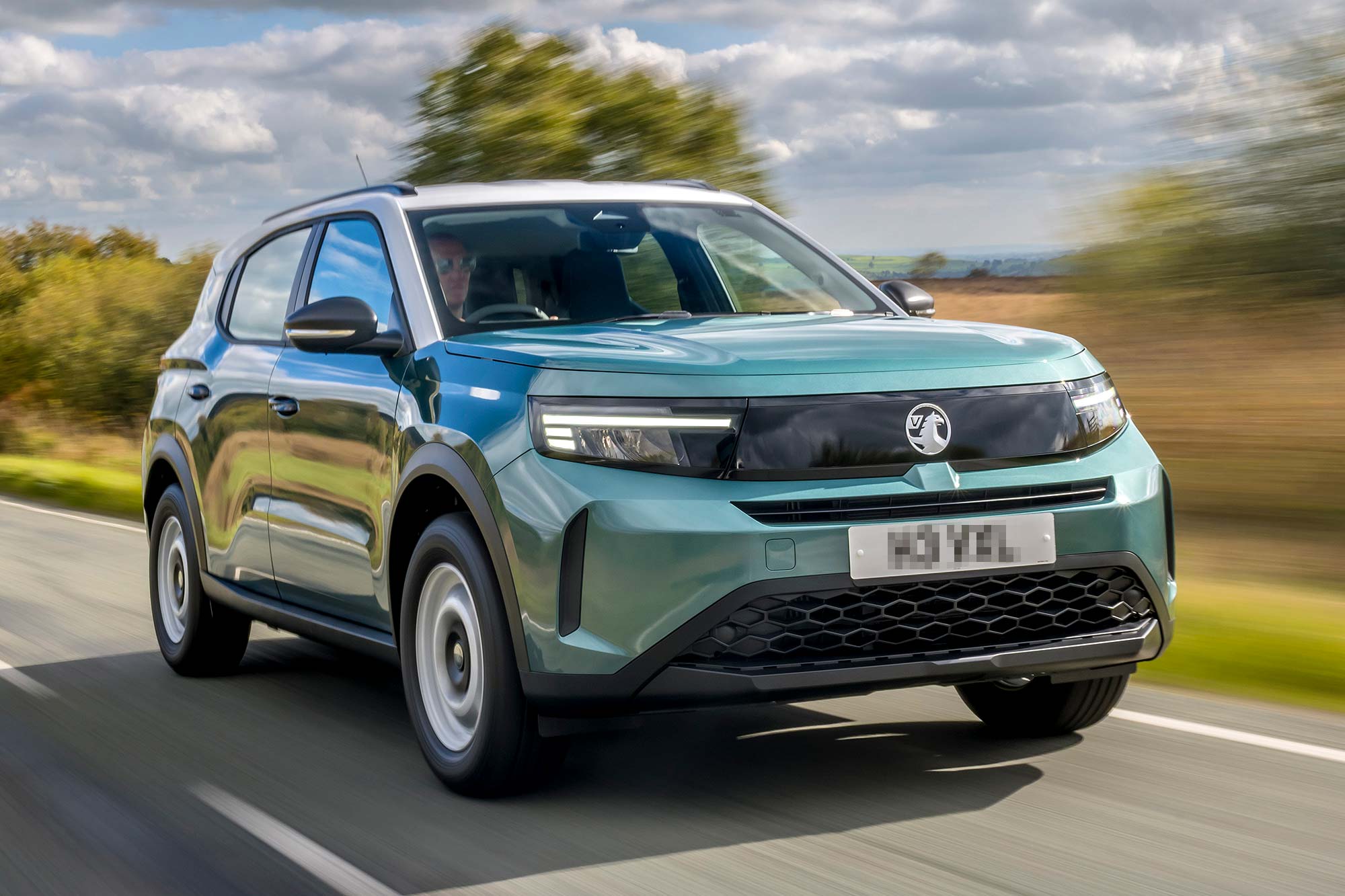There’s a lot more to headlights and car lights than just illuminating the road ahead at night. Lights on a car have many uses, and it’s essential to be aware of the different types of lights. This guide explains the different types of car lights and when they should be used.
Understanding when, how and why you should use the different car lights helps keep you – along with other road users and pedestrians – safe. For instance, you should know what car lights you should use at night, in the rain or in the fog, so that you are able to spot potential hazards despite the weather and reduced visibility.
The most important car lights are headlights. The two types of headlights are low beam and high beam, which allow drivers to see the road in the dark and make themselves visible to other motorists. Other car lights include DRLs, sidelights, and fog lights.
Here’s a full breakdown of the different lights on a car, followed by the different situations in which you should use them.
Types of lights on a car
- Headlights: High beam or low beam
- Daytime running lights (DRLs): Bright front lights, automatically activated
- Sidelights: Dim lights located in the headlamp units
- Rear fog lights: A single or double red light
- Front fog lights: Small white lights, low-set in the bumper area
What are Daytime Running Lights?
Although most drivers know about their cars’ headlights (hopefully!), a term that may not be as familiar is ‘daytime running lights’. Also known as driving lights, daytime running lights (DRLs) have been compulsory on all new cars built since 2011. Some drivers mistakenly think they are front and rear, however they only operate at the front of your car. Like sidelights, they are not suitable on their own if you are driving in the dark. Once it gets dark, or even on a dull day, regular headlights should be used in combination with sidelights.
Following the rules of the road
Clearly, if you are a driver it is very important to be aware of which types of lights you need to use and when. Not using your car lights correctly can lead to dangerous driving, putting yourself and others at risk.
The Highway Code states you must use headlights when visibility is seriously reduced. The definition of “seriously reduced” is when you can see less than 100 metres in front of you. In other words, headlights should be switched on at night-time and during poor weather.
If you are caught driving in the dark without headlights, you could face a fixed rate penalty of £100 and three points on your licence. However, if the police force deems that the offence can’t be covered by a fixed penalty, then you can expect to go to court, where the biggest fine would be £5,000 and nine points on your licence.
About the Motability Scheme
The Motability Scheme makes leasing a car an easy, hassle-free experience. If eligible, you can exchange part or all of your qualifying mobility allowance to lease a brand-new vehicle of your choice.
Using your lights at night
The primary use of car headlights is for driving in the dark, but this can be subjective. What one person considers dark, another may think is still quite light. This means that when one person turns on their main headlights, another may feel sidelights are still fine.
The key is to make sure you are seen as well as being able to see the road, so if in doubt, turn on the main headlights. It is recommended that you turn your car’s low beam (also known as ‘dipped’) headlights about an hour before sunset, and keep them on for an hour after sunrise. This will help you to make sure that you are visible to others, and are able to see the road clearly.
If you are driving in the dark on an unlit road, it is a good idea to turn on your high beam headlights. Just make sure that you turn them back down to low beam if another car approaches – otherwise you could dazzle the driver and impact their visibility.
It’s vital that you use your headlights when it is dark
Using your lights when there’s fog
All cars will have a rear fog light, and the button will show a lamp with a wiggly line in front of it. Some cars will also have front fog lights. As a general rule, the front fog light button will have the light pointing the same way as it does on the headlight switch.
So how much fog makes it officially foggy? At what point is it right to turn on your fog lights? The Highway Code states that you should use your rear fog light if you cannot see more than 100m beyond your car. The best way to measure this is to use the car in front: if you are struggling to see their rear lights, then turn your fog lights on. It is important to remember though that fog lights can dazzle other drivers and obscure your brake lights, so should not be used unless they are definitely needed.
Using your lights in wet weather
In the UK we see our fair share of rain and storms! Both falling rain and spray from standing water can affect visibility when driving. The simple rule of thumb when it comes to using lights in rainy weather is to turn on your dipped (low beam) headlights. There are some cases of motorways when the spray is so bad that you may even need to use the rear fog light. As mentioned above, if you can’t see the car in front of you, then the car behind can’t see you – which means it’s time to turn on your main lights.
It’s important to use your lights correctly in tricky driving conditions such as wet weather
See if the Motability Scheme could help you
Using your car lights for heavy loads
Most cars will have a separate small dial (usually located to the lower right of the steering wheel) which allows you to change the angle of your headlights when your car is heavily loaded or towing. Without the adjustment you could dazzle drivers because a heavily loaded car or a towing vehicle will lean back and point up. Get a friend to help test this and set your lights up correctly if you fit into this category. Just remember to reset the headlight angle adjuster when your car is back to carrying a normal weight or no longer towing.
Using automatic lights
A lot of newer cars have automatic headlights. They use a sensor to automatically turn on the lights when it gets dark. They vary in sensitivity, so it is important to quickly check that your lights are on if you feel it is getting dark. The dashboard symbol will come on as usual so you can tell when they are switched on. You can always override them too, and turn your lights on manually.
Automatic high beams
Traditionally, drivers have manually flicked headlights from bright high beams to low beams at the first sign of an oncoming car, so as not to dazzle other motorists. Many modern cars have automatic high beams which detect oncoming vehicles and automatically switch to a dipped beam, before switching back to a high beam once the vehicle has passed.
Using your lights when you go abroad
In many countries, it is illegal to turn off your lights completely so check online before you set off and make sure you follow the local rules. Also, UK headlamps are specifically designed for driving on the left-hand side of the road. Consequently, when driving on the right in Europe your headlamps will dazzle oncoming motorists. Before driving on the continent, ensure your vehicle is legal by adapting your headlamps. The easiest way is to fit headlamp beam converter kits, which are widely available. These self-adhesive adapters are cheap and take a few seconds to fit.
Flashing your headlights
The only valid use of flashing your headlights is to warn another road user of your presence. As the Highway Code states: “Only flash your headlights to let other road users know that you are there. Do not flash your headlights to convey any other message or intimidate other road users.”
Have you been flashed by an oncoming car, seemingly for no reason, then further down the road you come across a mobile speed trap? Flashing your headlights to warn other motorists of a speed camera is against the law. Under Section 89 of the Police Act 1996, it’s deemed “wilfully obstructing a constable in the execution of his/her duty” and could land you with a £1,000 fine.
It’s also common for drivers to use a flash of their headlights to tell another road user that the way ahead is clear. However, you should ignore a signal like this because you only have the other driver’s word for it. In other words, it could result in an accident.
Other types of car lights
As well as the car lights which are used to improve visibility, there are also other types of car lights that have different functions – they are usually meant to signify something to other drivers, for example if you are going to switch lanes or slow down. Here are some other lights that your car will have:
Brake lights
When you press the brake pedal two red warning lights are activated at the rear of your car. They are brighter than the tail lights, or sidelights, and warn the traffic behind you that you are slowing down. If you are stationary at traffic lights or roadworks, for instance, it’s useful to keep the brake pedal pressed – the bright red lights will warn cars approaching from behind that you are at a standstill or slowing down.
Tail lights
As you’d expect, tail lights are located at the rear of a vehicle. One on either side, they are red in colour and are activated automatically when the headlights are switched on. They help drivers behind you recognise that you are there, and help them gauge how close or far away your vehicle is.
Hazard warning lights
When you switch on your hazard warning lights (usually a large button with a red triangle in the centre console) all four of your car’s indicators will flash continuously and simultaneously. Hazard warning lights should only be used when your vehicle has broken down in a dangerous location or if you are travelling on a motorway/unrestricted dual carriageway and you need to warn drivers behind you of a hazard or obstruction ahead. Switching on hazard lights is not an excuse for unsafe or inconsiderate parking.
Emergency brake lights
Automatically activated to alert vehicles behind you during heavy braking, this safety system is becoming common on new cars. In normal braking, the brake lights shine with a constant glow. Emergency brake lights will flash. Additionally, your car’s hazard warning flashers are automatically activated. You may have seen this system in action on a motorway, where a driver ahead has had to brake hard suddenly.
Indicator lights
Also known as turn signals, indicators, signal lights or blinkers, indicator lights are amber in colour and are located at the front, rear and sometimes the sides of the car (often on side mirrors too). They are used to let other drivers know that you are planning to turn – this includes when you are driving on roundabouts, pulling away from a parked position, changing lane and overtaking. They are activated using the indicator stalk on your steering wheel column and they automatically switch off once you’ve straightened your wheels after making a turn. You should use them in good time, to give other road users and pedestrians time to react to your signal.
Reversing lights
When you put your car into reverse gear, either one or two white lights are activated at the rear of the car. This is a clear signal to other road users that you have engaged reverse and you are in the process of carrying out a manoeuvre. If there are vehicles or pedestrians around, wait for them to pass before moving.
Parking lights
Sidelights (the four low-wattage lights found in the corners of your car) also have a secondary purpose – as parking lights. The Highway Code says that all vehicles must display parking lights or sidelights when parked on a road (or lay-by) with a speed limit of more than 30mph. They can be left on for long periods of time when you leave your car and shouldn’t drain your battery. The Highway Code also recommends switching on your parking lights if your car, for unavoidable reasons, is parked on any road in fog.
Number plate light
Also known as licence or registration plate lights, your rear number plate has a small light that illuminates the plate number. If the mechanism or bulb isn’t working, your car will fail its MOT.
Find out more
The Motability Scheme enables you to exchange all or part of your mobility allowance for leasing a car, scooter or powered wheelchair. As part of this lease, you have access to breakdown cover, servicing, repairs, and even insurance. Take a look at our car search tool to see the full range of vehicles available on the Scheme and use our eligibility checker to find out if you can join.
Related articles
Reporting a car fault to a dealer or workshop
Winter tyres: what you need to know
How to demist your car windows fast
![]()
